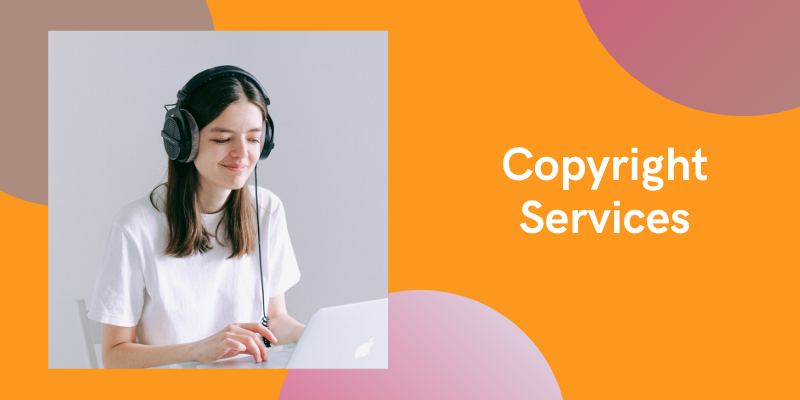Rapidly shifting your course from in-person to online
There are a lot of pedagogical and technical issues that make the shift from in-person to online teaching challenging, but for once, copyright is not a big additional area of worry! Most of the legal issues are the same in both contexts. If it was okay to do in class, it is often okay to do online, especially when your online access is limited to the same enrolled students.
Recording video of yourself, live-casting lectures, etc.
Slide Images
If it was legal to show slide images in class, it is likely legal to show them to students via live video conferencing or in recorded videos. This may be a surprise if you have heard that there is a big difference between class lecture slides and online conference slides – but the issue is usually less offline versus online, than a restricted versus an unrestricted audience. As long as your new course video is being shared through course websites limited to the same enrolled students, the legal issues are fairly similar.
Many instructors routinely post a copy of their slides as a file for students to access after in-person course meetings, which also likely doesn’t present any new issues after online course meetings.
In-lecture use of audio or video
Here, the differences between online and in-person teaching can be a bit more complex. Playing audio or video off of physical media during an in-person class session is 100% legal at the University of Minnesota under a provision of copyright law called the “Classroom Use Exemption”. However, that exemption doesn’t cover playing the same media online. If you can limit audio and video use for your course to relatively brief clips, you may be able to include those in lecture recordings or live-casts under the copyright provision called fair use. For media use longer than brief clips, you may need to have students independently access the content outside of your lecture videos.
Where to post your videos
There may be some practical differences in outcomes depending on where you post new course videos – on the University’s Kaltura platform it is easy to control access at the level of individual videos, and to connect to your course in Canvas. You also can post video to YouTube via your UMN Google account, and the same basic legal provisions apply even on YouTube. However, it is more likely that videos posted on YouTube may encounter some automated copyright enforcement, such as a takedown notice, or disabling of included audio or video content.
Course readings and other resources
Hopefully, by mid-semester, your students have already gotten access to all assigned reading materials.
If you want to share additional materials with students yourself as you revise instructional plans,or if you want students to share more resources with each other in an online discussion board, keep in mind some simple guidelines:
It’s always easiest to link!
Linking to publicly available online content like news websites, existing online videos, etc is rarely a copyright issue. (Better not to link to existing content that looks obviously infringing itself – Joe Schmoe’s YouTube video of the entire “Black Panther” movie is probably not a good thing to link to. But Sara Someone’s 2-minute video of herself and her best friend talking over a few of the pivotal scenes may be fair use, and is not something you should worry about linking to.)
Linking to subscription content through the Libraries is also a great option – a lot of our subscription content will have DOIs, PURLs, or other “permalink” options, all of which should work even for off-campus users.
Sharing copies
Making copies of new materials for students (by downloading and uploading files, or by scanning from physical documents) can present some copyright issues, but they’re not different from those involved in deciding whether to share something online with your students when you are meeting in-person. It’s better not to make copies of entire works – but most instructors don’t do that! Copying portions of works to share with students will often be fair use, and at times (especially in unusual circumstances, or with works that aren’t otherwise commercially available) it may even be fair use to make lengthier copies.
University of Minnesota policy affirms that it is an instructors right and responsibility to make their own decisions about when they think they can make copies for students. Libraries staff members can help you understand the relevant issues, and the University will back up instructors making informed and reasonable decisions on these issues.
Where an instructor doesn’t feel comfortable relying on fair use, a subject specialist librarian may be able to suggest alternative content that is already online through library subscriptions, or publicly online content. The Libraries may also be able to help you seek formal copyright permissions to provide copies to students – but there may be some issues with getting permissions on short timelines.
Multimedia viewing/listening
Showing an entire movie or film or musical work online may be a bit more of an issue than playing it in class – but there may be options for your students to access it independently online. The Libraries already have quite a bit of licensed streaming video content, which you are welcome to use in your online course. The Libraries also already have subscriptions to a significant set of streaming audio options for UMN users.
We may be able to purchase streaming access for additional media, but standard commercial streaming options like Netflix, Amazon, Hulu, and Disney+ may sometimes be the easiest option. (For exclusive content, the commercial services may be the only option.) Where there are no other options, fair use may sometimes extend to playback of an entire work, but again, that will generally only be true for unusual outliers.
Here are some additional resources on copyright issues in shifting courses online:
